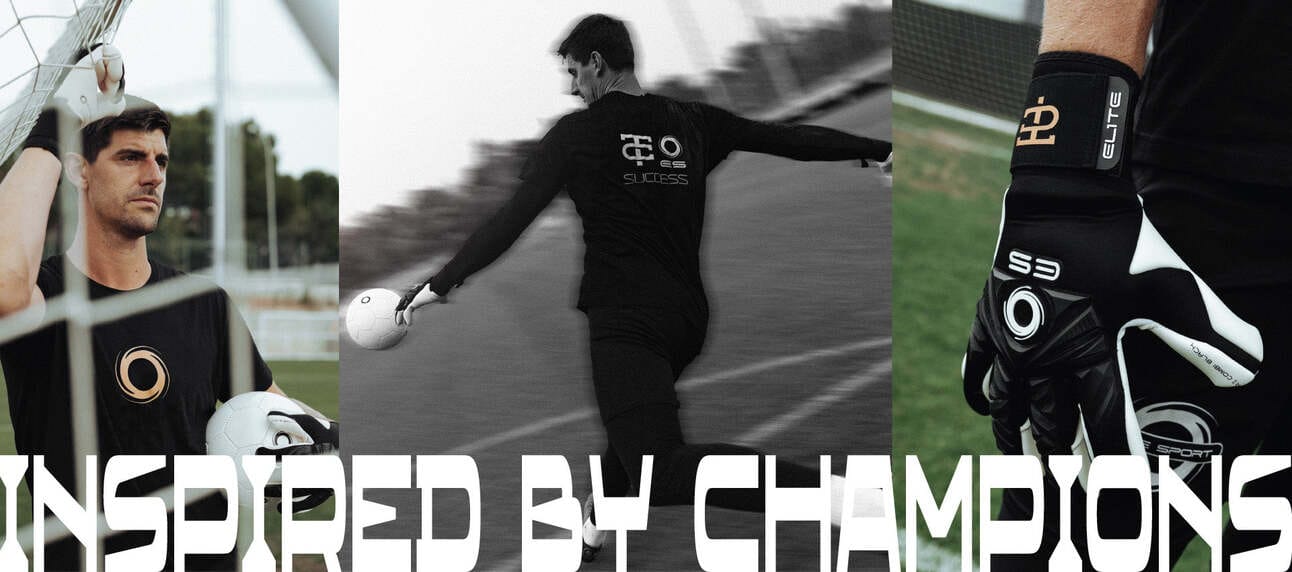- Elite Keepers Shop
- Posts
- How Weather Conditions Affect Your Choice of Soccer Gloves
How Weather Conditions Affect Your Choice of Soccer Gloves
When it comes to playing soccer, your equipment plays a crucial role in your performance, and soccer gloves are no exception. A goalkeeper's gloves are designed to provide optimal grip, comfort, and protection during the game. However, the weather conditions can significantly impact how well your gloves perform. Whether it's a rainy, cold, or hot day, understanding how to choose the right pair of gloves for the weather can help improve your game and ensure your hands are well-prepared for any conditions.
Importance of Weather Considerations
The type of gloves you choose should be closely linked to the environment in which you’ll be playing, soccer gloves come in various materials and cuts, each offering different benefits depending on the conditions. Different weather elements, such as temperature, humidity, and precipitation, affect the grip and overall comfort of your gloves. Here’s how various weather conditions impact your decision.
1. Rainy and Wet Conditions
Playing in the rain or during wet conditions requires special attention to the grip of your gloves. When wet, natural latex (commonly used in high-performance gloves) tends to lose its stickiness and become slippery. This can affect your ability to catch or hold onto the ball, which can be crucial during a match.
For wet weather, gloves with a wetter grip, specifically designed for rainy conditions, are ideal. These gloves usually feature latex compounds formulated to maintain grip even when damp. Gloves made with a "wet cut" or a hybrid grip system that balances latex and synthetic materials may be a better option in these situations. Some gloves are even treated with water-resistant technology to prevent moisture from affecting the grip, helping keep the gloves functional even in rain.
2. Cold Weather Conditions
Cold temperatures can cause discomfort for goalkeepers, especially when playing for long periods. Cold air can reduce the flexibility of latex, which might compromise the overall grip of the gloves. In addition, your hands can become stiff, making it more difficult to catch and handle the ball.
For colder weather, consider gloves with additional thermal insulation. Some gloves are designed with a fleece lining or other materials to help retain warmth while still offering good grip. A thicker latex, or gloves with a thicker cut, might also be beneficial in colder climates. The thicker latex can maintain its grip in lower temperatures, while the additional material can help keep your hands warm, making it easier to move and catch the ball.
3. Hot and Dry Conditions
In hot weather, sweat becomes a significant factor. As your hands perspire, your gloves can lose grip, making it challenging to perform effectively. Gloves that aren’t breathable enough can also lead to discomfort and hand fatigue.
During dry and hot conditions, it's essential to choose gloves with excellent ventilation and moisture-wicking properties. Gloves with breathable mesh panels, or a cut that offers extra airflow, will help keep your hands cool and dry. Synthetic gloves are also a popular option for warm weather, as they tend to offer a better balance of grip and durability compared to latex. They also hold up better under extreme heat, where latex gloves can start to degrade after extended exposure.

4. Extreme Weather Variations
In some cases, you might be dealing with extreme weather conditions, such as intense humidity or fluctuating temperatures. In such situations, you’ll want gloves that are versatile and durable enough to withstand unpredictable conditions.
Look for gloves that feature hybrid materials, which combine the best elements of both latex and synthetic materials. These gloves can offer a good balance of performance, durability, and comfort. Additionally, hybrid gloves often come with technology that adjusts to various weather conditions, ensuring that they maintain consistent performance regardless of the temperature.
Choosing the Right Gloves for Each Weather Condition
When choosing gloves for different weather conditions, it's essential to consider the following factors:
1. Grip Material
The grip material of the gloves is perhaps the most important factor to consider. Latex provides the best grip but performs poorly in wet conditions. Synthetic materials, on the other hand, tend to maintain their performance across a broader range of weather but may not offer the same level of grip as latex.
2. Cut and Fit
The cut and fit of the gloves determine how comfortable they will be to wear during extended play. For example, a negative cut glove offers a snug fit, which is great for performance but may reduce airflow in hotter climates. A flat cut or a roll finger design may offer better ventilation, which is a plus in warmer weather.
3. Durability
Durability is another key consideration. Gloves that are designed for wet weather may not hold up as well on turf or in dry conditions. For those playing on artificial surfaces or in drier climates, gloves made with more durable synthetic materials may be better suited for the task.
4. Budget and Frequency of Use
If you play often, investing in high-performance gloves designed for specific weather conditions can be worth it. However, for recreational players or those who only play in one weather condition regularly, a more versatile glove may be a better choice.
The Key to Consistent Performance
Understanding how different weather conditions affect your choice of gloves is vital to achieving consistent performance as a goalkeeper. By selecting the right pair of gloves based on weather forecasts and game conditions, you can ensure that you’re always prepared for the match. Whether you're playing in the rain, the cold, or the heat, there's a pair of gloves designed to help you maintain the best grip, comfort, and protection. Make sure to keep the specific demands of the weather in mind when choosing your next pair, and don't hesitate to try out different materials and cuts to find the perfect fit for your game.